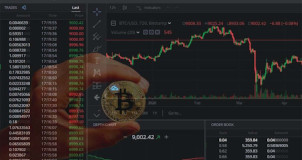
The FIFA ranking is a mathematical model that allows us to rank the football national teams of the world. Based on the understanding of this model, we correctly forecast the last FIFA ranking before the 2018 FIFA World Cup.
The FIFA ranking is a mathematical model that allows us to rank the football national teams of the world. Based on the understanding of this model, we correctly forecast the last FIFA ranking before the 2018 FIFA World Cup.
Mathematical models allow us to forecast or describe events using mathematics. There are innumerable ways in which we can formulate a model. In this article we will describe one that is highly relevant in football: "the FIFA ranking." This model allows us to rank the national teams according to their performance. It was developed in 1992 and from then on it underwent some modifications. The first version of the model was valid until 1998, the second version was valid until mid-2006, the third version lasted from mid-2006 until the start of the 2018 FIFA World Cup, and the fourth version, being the last one, began afterwards. In this article we are going to study the third version and based on it we will forecast the best 12 teams just before the start of the 2018 FIFA World Cup. To achieve this, we will consider the ranking published on March 15th, 2018, and use it to predict the ranking given on June 7th, 2018. This article was published on April 4th, 2018... A summary with some extra info appears in the following video:
The last ranking (R) before April 04th, 2018, was published on March 15th. It reads:
As shown in Table I, Peru and Denmark are excluded from the top 10. However, in the future this may change. To elucidate a possible outcome of the following ranking, we must understand how the model works. To do so, we will focus on Peru and understand how it got 1128 points. Let's check Peru's matches in the last 4 years:
In Table II, we have split the last 4 years in 4 periods. The first period considers matches that were played between March 15th, 2017 and March 15th, 2018. The second period runs from March 15th, 2016 to March 15th, 2017. The third period runs from March 15th, 2015 to March 15th, 2016. And the fourth period runs from March 15th, 2014 to March 15th, 2015. As you can see, the number of games in each period is not constant, for example, in Table II.4 the first game is given on May 30th, 2014, while in Table II.3 it starts on March 31st, 2015, giving rise to a larger number of games. In the third column of Table II, W means that Peru won, L that it lost and D is a draw. In the fourth column we show the number of points obtained per match, you can easily see that no points are given when Peru loses a match, but how do you get the winning and drawing points? For each match, the total score $(\mathscr{S})$ is given by:
where M = 3, 1, or 0 depending on whether the team won, drew, or lost, respectively. I = 1, 2.5, 3.5, or 4.0, depending on the importance of the match, 1 is given to a friendly match, 2.5 to a Qualifying match, 3.5 to a Continental Cup (e.g., Copa America) or the Confederations Cup and 4.0 to the World Cup. T = (200 - #), where # represents the position of the opponent team in the last FIFA ranking available before that match. It is worth mentioning that the minimum possible value of T is 50, that is, if the value of the subtraction, 200 - #, is less than 50, it will be rounded to that number. Also, when a team faces the top 1 of the ranking, T = 200, that is # = 0. Finally, C represents the value of the Confederation. C = 1.0, 0.99, or 0.85, depending on whether the team is from Conmebol, UEFA, or the others, respectively. This value varies after each World Cup, the values given here are valid until the end of the 2018 FIFA World Cup. In the event of matches between teams from different Confederations, C adopts the value of the arithmetic mean.
Let's take for example the match between Peru and New Zealand on November 17th, 2017, the score in this case is given by:
This is how we obtain the points given in Table II. One may notice that the match against Haiti on June 4th, 2016, gave Peru 1048.95 points while the match against Paraguay on November 18th, 2014, barely gave Peru 372 points. The reason is because the match against Haiti was part of a Copa America, while the match against Paraguay was a friendly match. This fact exhibits particular shortcomings in the FIFA ranking but one must remember that it is a mathematical model and not an absolute truth that will really tell us who is better than who.
To obtain Peru's score (1128 points) we must calculate the arithmetic mean of each period given in Table II, e.g., if there are 10 matches in the first period, then we add the points of the given matches and divide the sum by 10, In this case we get:
Finally, the final score $(\mathscr{S}_f)$ is given by:
This is how Peru got 1128 points until March 15th, 2018. As you can see, the final score considers only the last 48 months separated into 4 periods. The first period, being the closest one, has more relevance and that is why in the formula above we use the factor 1.0 as multiplication. The second period has a factor of 0.5, the third of 0.3 and the fourth period, being the least relevant, has a factor of 0.2. As we can see from Table III, Peru had good results in the last two periods, accumulating scores above 600 points. This allows us to glimpse that the future is promising for the Peruvian team, which will soon erase from the calculations the terrible campaign of 2014, where it barely got 203.82 points.
Now we will predict Peru's score in the next FIFA ranking (June 7th, 2018), which will be the last one before the start of the 2018 FIFA World Cup. We show below the matches to take into consideration:
As you can see in Table IV, the periods have been shifted because now the last 12 months run from June 7th, 2017 to June 7th, 2018. Following our previous analysis we proceed to obtain the average scores of each period:
Considering Table V, the final score $(\mathscr{S}_f)$ reads:
According to our calculations, 1125 will be Peru's score before the start of the 2018 FIFA World Cup. As I mentioned at the beginning, once this tournament ends a fourth version of the model will be used, this new version is discussed in a later article. Comparing Tables II.1 and IV.1, we see that in the latter Peru has 4 new matches. The wins against Croatia and Iceland are correctly calculated because these matches were played before this article was written. The wins against Scotland and Saudi Arabia are estimates made by me, that's why I consider a margin of error. I chose ± 1, because I don't know the exact positions in the ranking of the opponent teams. Remember that this information is important to calculate the value of T in the formula of the model. Of course, if Peru doesn't win its matches, then its score will be much lower. Here we are simplifying the analysis, assuming that Peru, eventually, will win the last two games.
The pending question is: "With this score, in what position will Peru be?" To find out this, we have to do the same analysis for the other teams. This is not shown here to ease the discussion. The final result reads:
As you can see in Table VI, Peru reaches the tenth position only if Switzerland beats Spain. If this result does not occur, Peru would remain in the eleventh position. Therefore, the most interesting match for the Peruvian team would be Spain vs. Switzerland. As you can see in Table VI, most of the points given to the teams have a margin of error of ± 1, the reason is similar to what was discussed with Peru, that is, the minimum error is due to the fact that we don't know the exact value of T. However, for France and Denmark we have a special consideration, the margin of error of ± 30 and this is because both teams have difficult matches to determine. For example, France faces Ireland and Italy. If France wins both games, its score would be around 1168 + 30 points. However, if it draws, it would be near to 1168 - 30. As you can see, I'm ruling out the case of France losing both games because it is one of the strongest European teams of the season. To check if our analysis was correct, it would be enough to compare Table VI with the official FIFA result given on June 07th, 2018... What do you think the result would be?
Afternote: The official result was:
Spain drew with Switzerland, therefore, comparing the results of Table VII with those given in Table VI for the case of a draw, we can see that our forecast was correct with some minimal variations.
Views: 1 Sports
Notifications
Receive the new articles in your email








